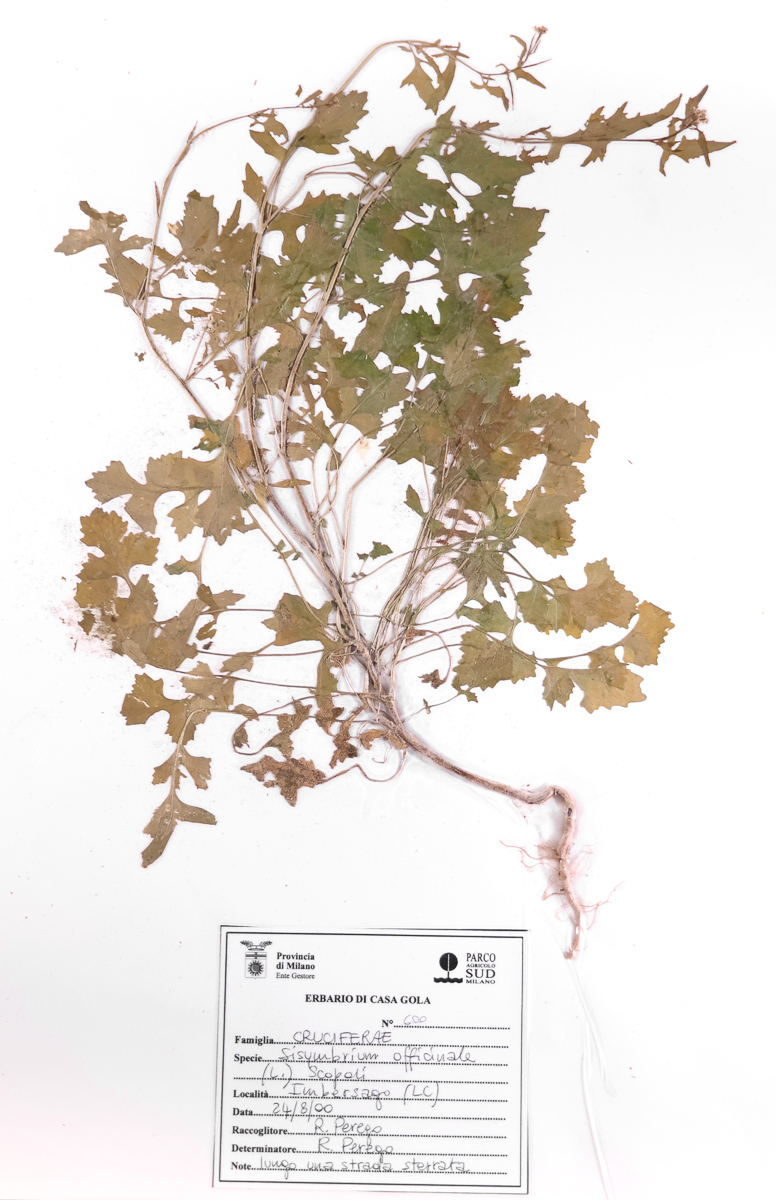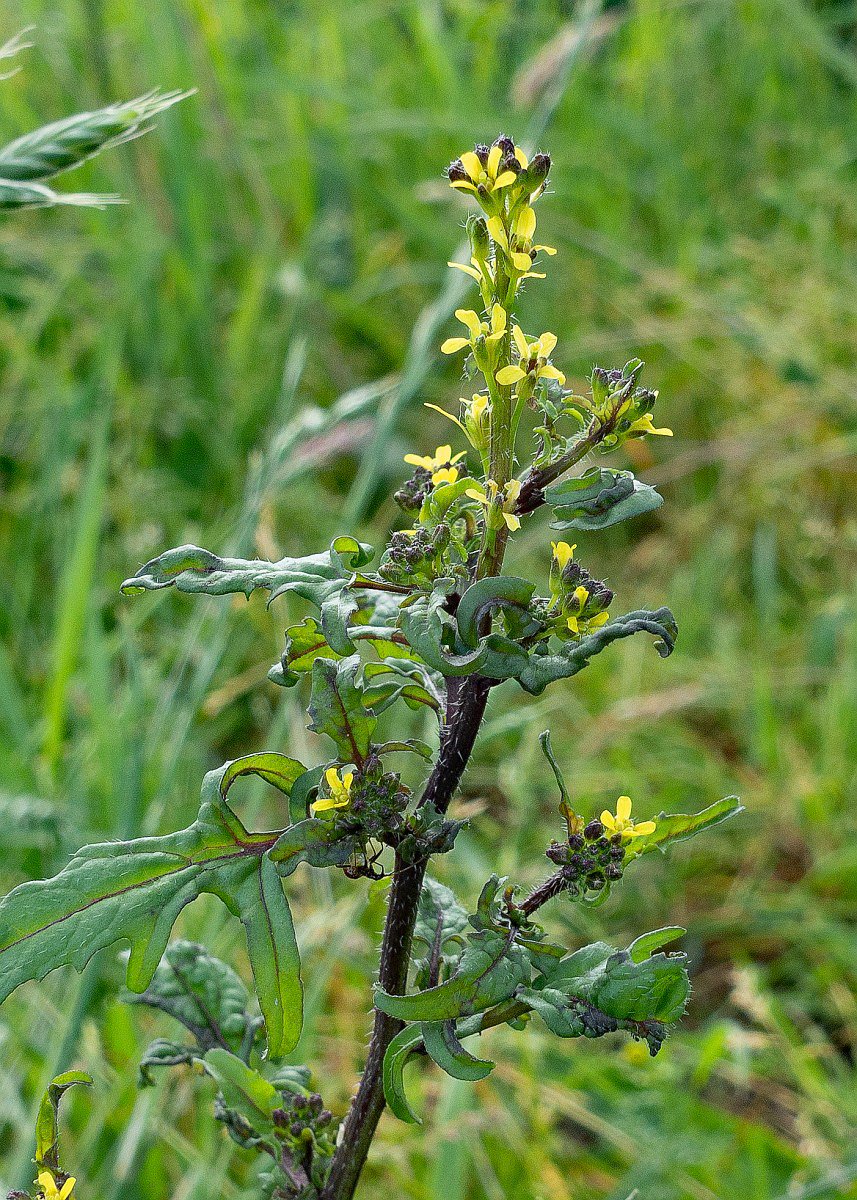Hedge mustard
Scientific name: Sisymbrium officinale (L.) Scop.
Family: Brassicaceae
MORPHOLOGY
Habit and Size: Annual herbaceous plant with a single stem, taproot, and white color, typically 30-90 cm tall.
Stem: Erect stem with patent or erect-patent branches at right angles, rigid, green opaque or violet, with scattered 1 mm long hairs.
Leaves: Basal leaves are petiolate, arranged in a rosette, pinnatisect to lyrate with oblong-obovate segments, with the terminal lobe longer and incised-dentate (2-3 x 6 x 12 cm); intermediate leaves are semi-amplexicaul with 2 lateral lobes, dentate, and up to 5 cm long; upper leaves are amplexicaul, generally hastate with an oblong-lanceolate terminal lobe and 2 lateral patent lobes.
Flowers: Spike-like inflorescence in a terminal raceme, dense at anthesis and somewhat loose at fruiting. Fruiting pedicels are appressed to the stem, thickened, densely hairy or sometimes glabrous (2 mm), about the length of the siliques. Sepals are 4, approximately erect-patent, about 2 mm, with sparse hairs. Petals are 4, pale yellow, 3-4.2 mm long. Blooms from April to July.
Fruits and Seeds: The fruit is a siliqua with a peduncle appressed to the stem, erect, cylindrical-conical with 2 trinerved valves.
DISTRIBUTION AND HABITAT
Widespread throughout Italy in fallow lands, along the edges of paths and roads, and in ruins, from 0 to 1000 meters, with occurrences over 2000 meters.
USE
Although the active principle is not yet scientifically proven, the use of erisimo (Sisymbrium) is ancient. In popular medicine, it has been systematically used as a decongestant for the pharyngeal mucosa, anti-sweating, diuretic, and expectorant. These properties are attributed to the presence of sinigrin (sulfurous essence), mucilages, dextrin, pectin, and glucosides. An infusion added to bath water is an excellent skin decongestant. Before using any plant-based product (whether medicinal or not) for therapeutic or similar purposes, it is always advisable to consult a doctor.
INTERESTING FACTS
This species is also called “singer’s herb” because of its use by young choir singers. Historical evidence dates back to the Renaissance when Jacques Dalechamps (1513-1588) noted that the physician Guillaume Rondelet used this plant to cure one of the choir boys.
Photo: licensed free of charge from Saxifraga and Ed Stikvoort, Rutger Barendse, Jan van der Straaten, Ab H Baas





















